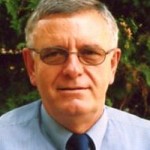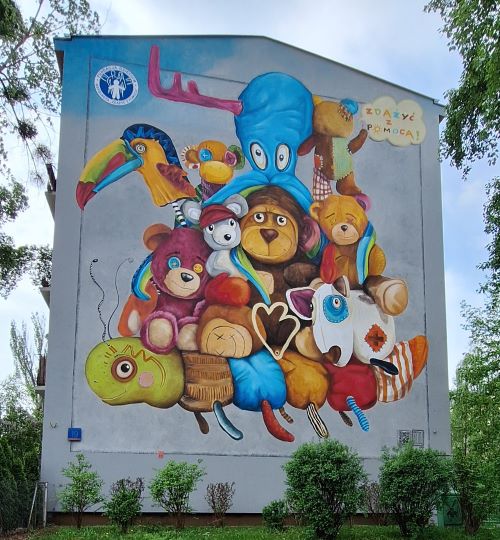29 kwiecień 2008
Symbol of state
The Royal Castle has a special status. It is a monument rebuilt with public money and must contribute to the public good, wjich is why our mission is so varied. The castle can accommodate large events that are remembered forever as part of Polish history. We always taje the public interest into account – saying Prof. Andrzej Rottermund.
PROF. ANDRZEJ ROTTERMUND
Director of the Royal Castle in Warsaw
Damian A. Zaczek:
Are you sometimes tempted to compare the Royal Castle as it must have been before WWII with its current manifestation?
PROF. ANDRZEJ ROTTERMUND: The Royal Castle has always been a symbol of the State because it was the headquarters of the Sejm of the Republic of Two Nations and the royal residence. During the 20-year interwar period, it was used as the headquarters of the Polish president. It became a symbol of renewal following the destruction of WWII, when a great deal of effort and campaigning convinced the authorities to rebuild the castle with public funds. This is the primary difference between the Royal Castle in Warsaw and Wawel Castle in Kraków.
In what other ways does the Royal Castle differ from Wawel Castle?
It is often said of Wawel that the castle is a completely original structure, while the castle in Warsaw is a reconstructed building. The walls of Wawel castle are original in one sense, but were built in earlier centuries. However, we know that Wawel was completely rebuilt in the 19th century. The biggest difference between the two castles is that Warsaw’s castle contains all of its original furniture and interior decorations. It would be hard to claim that one structure is greater than the other. Anyway, it would be an absurd argument. The most important thing is that these are the two headquarters of Polish monarchs. Both sites have enormous symbolic meaning for Poland.
In terms of historical continuity, how is the castle used today?
On a day to day basis the castle places a very large role, which could be increased if we had considerably larger financial resources at our disposal for the organization of more exhibitions or other artistic events. The castle is a place where children and youth are educated. They visit in order to learn about the history of Poland. Various social and political events also take place here. We present exhibitions devoted not only to Polish history, but to Polish art within a European and international context. Currently, we are hosting an exhibition of French art from the 16th to the 20th centuries. On the other hand, we are also presenting work about King Stanislas Leszczyński, a less well-known figure in Poland. The Polish monarchy was immensely beneficial for Lotharingia, about which few are aware in Poland.
In recent years we have hosted many exhibitions dedicated to our contacts with neighboring countries, such as Pod jedna korona (Under One Crown) about our relations with Sweden. We have also featured our relationship with the Moscow state in the 17th century, an exhibition devoted to Polish religious art. – including dozens of exhibits describing our deeds and outlining the historical continuity of the state.
The castle is not only a venue for exhibitions but an investment. Renovation work is visible from the side facing the Vistula…
Yes, we want to take full advantage of the castle’s location. We when took over the Pod Blachą Palace, its technical condition was grave. After a massive renovation, we want to open the apartments of Prince Józef Poniatowski, the former owner of the palace. The prince’s chambers will be used as educational workshops. Limited motorized traffic on Krakowski Przedmieście Street and the eventual ban on motorized vehicles on this street will force us to move the castle’s main entrance to face the Vistula river. We hope that the main entrance to the castle will be located in the Kubicki Arcades as early as one year from now. By turning the castle towards the Vistula, we will regain the castle gardens.
High-level politics are also hosted by the castle – most recently the Council of Europe Summit. Do you enjoy these kinds of events?
The Royal Castle has a special status. It is a monument rebuilt with public money and must contribute to the public good, which is why our mission is so varied. The castle can accommodate large events that are remembered forever as part of Polish history. The fact that the Third Council of Europe Summit that will take place at the Royal Castle also has symbolic meaning. On the other hand, such an event is also an incredibly hindrance in the castle’s day to day operation. However, we realize that some issues take priority and we always take the public interest into account.
Do you attempt to gain access to European Union funds?
To date all investments in the castle were financed by the state budget using special funds from the resources of the minister of culture as well as our own resources. After 30 years of operation, the castle’s air conditioning and ventilation systems, window frames, roof and so on needed to be replaced. This requires enormous amounts of money. As a new member of the EU, we enjoy many new opportunities to obtain union structural funds. The Pod Blachą Palace will be renovated, adapted and preserved using EU funds. The Royal Castle was ranked first among projects put forward by Mazowiecki province and the minister of culture committed to contribute 25 percent of the total expenditures. Last fall work began on the Pod Blachą Palace. We are already preparing another application for structural funds to finish the last phase of work near the Kubicki Arcades, which will include restaurants, a theater for children and young people as well as an exhibition of the castle’s archeology. Our next great challenge will involve renovation of the castle gardens. We have already finished a design and cost analysis. So, we also have a chance to ask for EU money.
We also intend to develop the castle’s infrastructure, among other things by replacing the fire alarm system.
Membership in the EU should also result in wider international contacts…
Yes, right now we are establishing considerably closer contacts with other museums in Europe. These are contacts on a different level – more relaxed. On the other hand, we also have a growing number of financial opportunities. Both developments are being effectively exploited. Our contacts with European art are not incidental, but are featured within a permanent program. That gives us a European community.
Thank you.

























III COUNCIL OF EUROPE SUMMIT
Forum for dialogue
May 16-17 this year, 46 leaders of European states met at the Royal Castle in Warsaw, with the exception of Belarus which is not a COE member. Poland represents Prof. Tadeusz Iwiński. więcej...